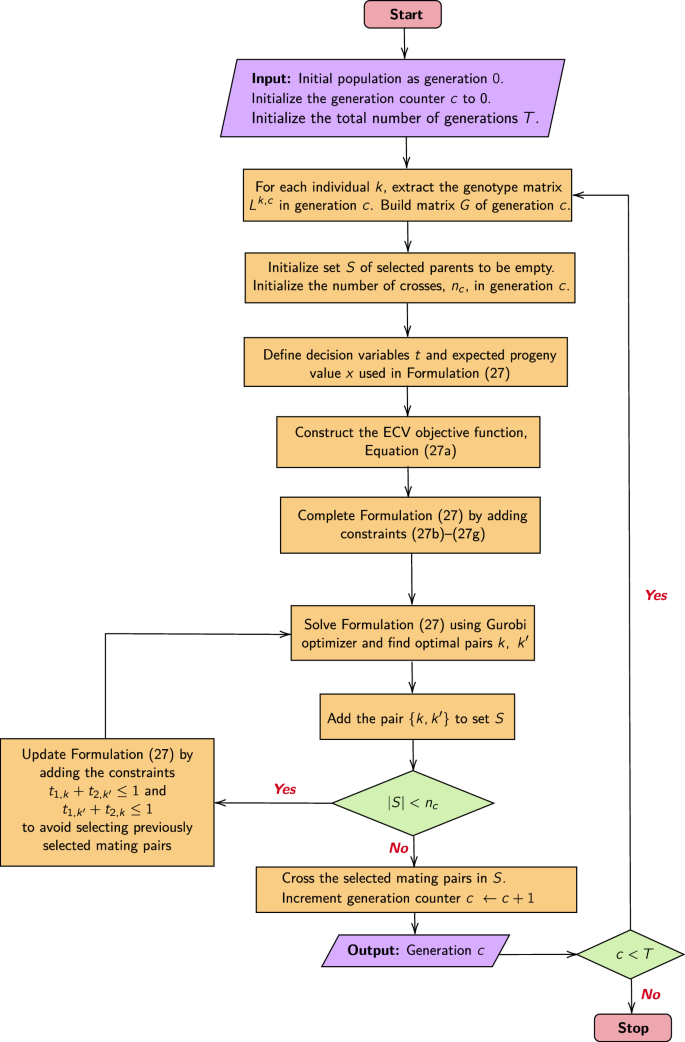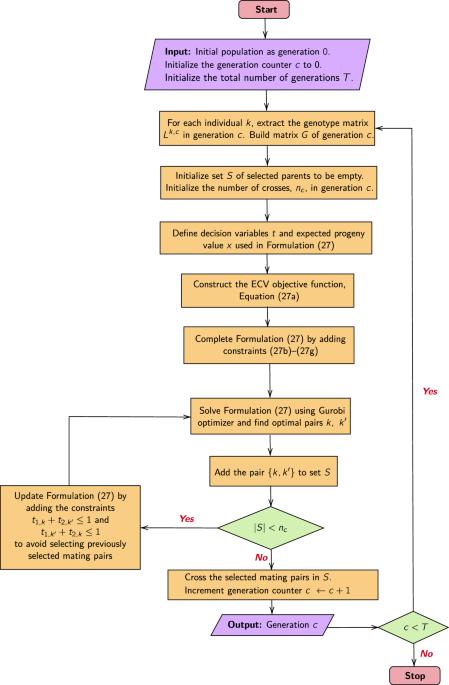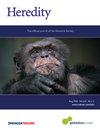Development and optimization of expected cross value for mate selection problems
IF 3.1
2区 生物学
Q2 ECOLOGY
引用次数: 0
Abstract
In this study, we address the mate selection problem in the hybridization stage of a breeding pipeline, which constitutes the multi-objective breeding goal key to the performance of a variety development program. The solution framework we formulate seeks to ensure that individuals with the most desirable genomic characteristics are selected to cross in order to maximize the likelihood of the inheritance of desirable genetic materials to the progeny. Unlike approaches that use phenotypic values for parental selection and evaluate individuals separately, we use a criterion that relies on the genetic architecture of traits and evaluates combinations of genomic information of the pairs of individuals. We introduce the expected cross value (ECV) criterion that measures the expected number of desirable alleles for gametes produced by pairs of individuals sampled from a population of potential parents. We use the ECV criterion to develop an integer linear programming formulation for the parental selection problem. The formulation is capable of controlling the inbreeding level between selected mates. We evaluate the approach or two applications: (i) improving multiple target traits simultaneously, and (ii) finding a multi-parental solution to design crossing blocks. We evaluate the performance of the ECV criterion using a simulation study. Finally, we discuss how the ECV criterion and the proposed integer linear programming techniques can be applied to improve breeding efficiency while maintaining genetic diversity in a breeding program.


开发和优化择偶问题的预期交叉值。
在本研究中,我们探讨了育种过程中杂交阶段的配偶选择问题,该问题构成了多目标育种目标,对品种开发计划的绩效至关重要。我们制定的解决方案框架旨在确保选择具有最理想基因组特征的个体进行杂交,以最大限度地将理想遗传物质遗传给后代。与使用表型值进行亲本选择和单独评估个体的方法不同,我们使用的标准依赖于性状的遗传结构,并评估成对个体的基因组信息组合。我们引入了预期杂交值(ECV)标准,该标准衡量了从潜在亲本群体中抽样的配对个体所产生的配子中理想等位基因的预期数量。我们利用 ECV 标准为亲本选择问题开发了一种整数线性规划公式。该公式能够控制所选配偶之间的近亲繁殖水平。我们在两个应用中对该方法进行了评估:(i) 同时改善多个目标性状;(ii) 找到设计杂交区块的多亲本解决方案。我们通过模拟研究评估了 ECV 标准的性能。最后,我们讨论了如何应用 ECV 标准和建议的整数线性规划技术来提高育种效率,同时保持育种计划中的遗传多样性。
本文章由计算机程序翻译,如有差异,请以英文原文为准。
求助全文
约1分钟内获得全文
求助全文
来源期刊

Heredity
生物-进化生物学
CiteScore
7.50
自引率
2.60%
发文量
84
审稿时长
4-8 weeks
期刊介绍:
Heredity is the official journal of the Genetics Society. It covers a broad range of topics within the field of genetics and therefore papers must address conceptual or applied issues of interest to the journal''s wide readership
 求助内容:
求助内容: 应助结果提醒方式:
应助结果提醒方式:


